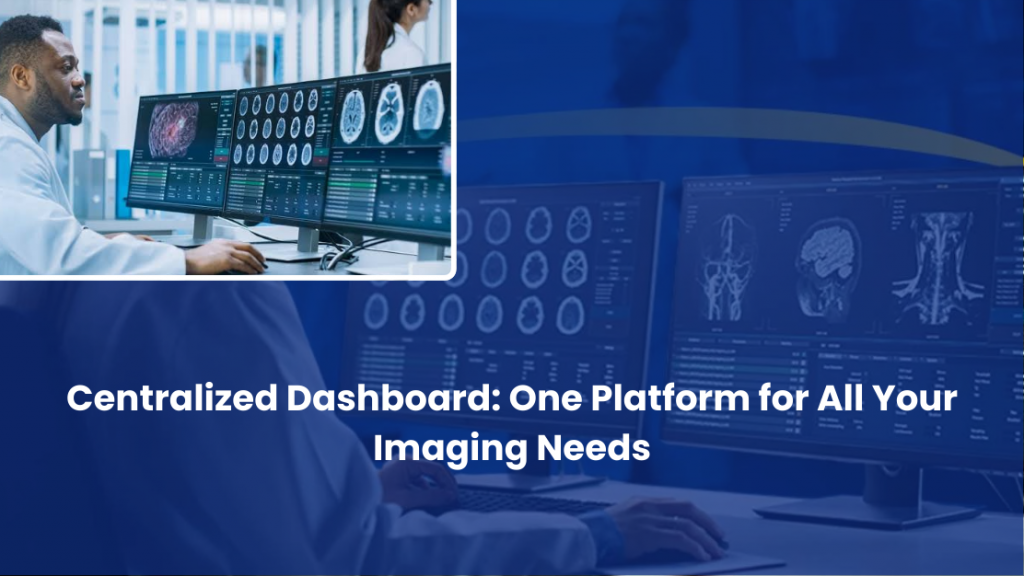In today’s fast-paced healthcare environment, radiologists and hospital administrators are constantly seeking ways to streamline operations, reduce errors, and improve patient care. A centralized dashboard—especially one integrated into a Picture Archiving and Communication System (PACS)—has emerged as a transformative solution for managing all imaging-related activities from a single platform.
This article explores how a centralized dashboard simplifies radiology workflows, enhances clinical decision-making, and offers hospitals and diagnostic centers a smarter, more efficient way to manage imaging data.
What Is a Centralized Dashboard in Radiology?
A centralized dashboard in the context of radiology refers to a unified digital interface that consolidates all imaging data, patient records, reporting tools, and system performance analytics in one place. Instead of accessing multiple platforms or software to review scans, write reports, or track performance, radiologists can work through one single interface.
This approach not only enhances workflow efficiency but also promotes collaboration, reduces turnaround times, and helps maintain consistency in diagnoses and patient care.
Why Centralization Matters in Radiology
Radiology departments generate massive volumes of data daily. Without a centralized system, this information is often scattered across different platforms—making retrieval, interpretation, and reporting inefficient and time-consuming.
A centralized dashboard changes that by offering:
- Unified Access: View patient images, reports, and histories all in one place.
- Real-Time Updates: Instantly see changes in scan results or reporting status.
- Streamlined Workflow: Simplifies case assignment, reporting, and review.
- Cross-Department Collaboration: Enables radiologists, technicians, and referring physicians to access the same data simultaneously.
Key Features of a Centralized PACS Dashboard
Let’s explore the core features that make a centralized dashboard so effective in radiology environments:
- Single Sign-On Integration
No need to log in to different systems. With one login, healthcare professionals can access patient images, previous reports, scheduling information, and more—reducing time wastage and login errors. - Customizable Interface
Users can tailor their dashboard based on role—radiologists, technicians, or hospital administrators can have their preferred view with relevant tools, pending reports, or key performance indicators. - Real-Time Case Tracking
Track which cases are pending, in review, or reported. This visibility eliminates bottlenecks and improves accountability within the radiology department. - Report Management and Dictation Tools
Radiologists can access embedded tools for voice dictation, AI-assisted reporting, and direct EHR integration for faster, error-free documentation. - Advanced Analytics and Audit Trails
Hospital managers can monitor departmental performance, productivity, and compliance through built-in reporting tools and audit logs.
Benefits of a Centralized Dashboard for Radiologists
- Improved Efficiency: By eliminating the need to switch between platforms, radiologists can reduce time spent on administrative tasks and focus more on diagnostic accuracy.
- Enhanced Diagnostic Accuracy: Having complete patient history, prior scans, and related documentation in one place improves diagnostic confidence and consistency.
- Collaboration and Peer Review: Multiple specialists can access the same images and reports for second opinions or real-time collaboration—improving patient care quality.
- Better Time Management: Automated notifications and case prioritization tools help radiologists allocate time efficiently to critical or time-sensitive cases.
Benefits for Hospital Administration and IT Teams
- Reduced Operational Costs: One unified platform reduces the need for multiple software licenses, maintenance, and training—lowering total cost of ownership.
- Easier Maintenance and Security: With centralized access control and audit logs, IT teams can manage user permissions, monitor access, and ensure HIPAA compliance more easily.
- Improved Patient Satisfaction: Faster turnaround times for reports and accurate diagnostics contribute to better treatment outcomes and higher patient satisfaction.
Use Case Example: From Complexity to Clarity
Consider a mid-sized hospital with over 100 daily radiology cases. Previously, the team used separate platforms for image viewing, reporting, and communication with referring physicians. This created delays, confusion, and occasional reporting errors.
After integrating a centralized dashboard through their PACS system, the hospital noticed:
- 40% reduction in report turnaround time.
- 25% increase in radiologist productivity.
- Enhanced communication with referring physicians.
- Lowered risk of missed or delayed diagnoses.
Future-Ready Radiology with Centralized Dashboards
With the healthcare industry leaning toward digitization, centralized dashboards are becoming a vital component of future-ready radiology departments. Features like AI integration, cloud storage, mobile accessibility, and tele-radiology compatibility are further expanding their potential.
Incorporating a centralized dashboard not only enhances operational control but also aligns radiology practices with modern healthcare expectations—seamless, fast, and patient-focused.
Conclusion
A centralized dashboard is more than just a convenience—it’s a necessity for modern radiology. It unites fragmented processes into a coherent system that saves time, reduces costs, and improves patient care. For hospitals and diagnostic centers looking to upgrade their imaging operations, investing in a PACS solution with a powerful centralized dashboard is a strategic move toward better outcomes and efficiency.
Let your radiology department operate smarter, faster, and more collaboratively—with everything you need in one place.
